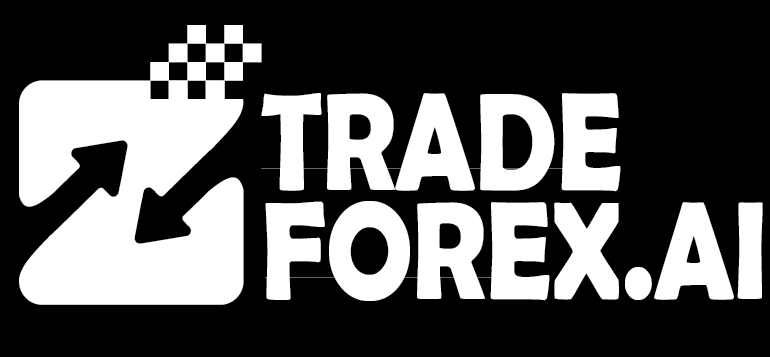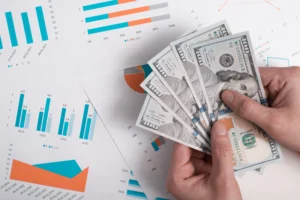If you’re new to trading or want to test strategies without risking real money, paper trading is your best friend in 2025. Today’s markets move fast. Jumping in unprepared can mean quick losses and a steep learning curve. With paper trading, you get a risk-free way to learn, practice, and sharpen your trading skills—all with virtual money. In this guide, you’ll learn what paper trading is, how paper trading platforms work, how to use simulated trading strategies, and why a virtual trading account is a must for every serious trader. Plus, you’ll get real-life examples and tips to make your demo trading for beginners journey both smart and rewarding.
What Is Paper Trading, and Why Should You Care?
Paper trading is all about practice, not pressure. It means simulating real trades using virtual funds instead of your own cash. Long before online brokers existed, traders used pen and paper to record mock trades and track results. Now, everything is digital. Paper trading platforms bring real market action to your screen, so you can buy, sell, and track performance as if you’re trading for real—but without any risk.
Think of it as learning to drive in a simulator before hitting the actual road. With a virtual trading account, you make mistakes, learn fast, and build habits that protect you when you go live. Every serious trader, from beginners to pros testing new ideas, benefits from time spent in demo trading for beginners mode.
Top Benefits of Paper Trading for Every Trader
The main appeal of paper trading is safety. You get all the action with none of the risk. Here’s why starting with a virtual trading account makes sense in 2025:
- Practice trading skills without losing real money
- Try out new strategies with no fear
- Trade with real-time data and tools
- Instantly see what works—and what doesn’t
- Learn from mistakes in a zero-pressure setting
- Build a trading journal for deeper insights
For example, let’s say you want to try day trading. Instead of putting $2,000 on the line right away, you open a paper trading account with $20,000 in virtual money. You buy, sell, and manage trades exactly as you would in real life, getting feedback and experience while your real money stays safe.
How Do Paper Trading Platforms Work?
Modern paper trading platforms make practice as real as possible. Most major brokers and apps offer a virtual trading account. Here’s what usually happens:
- You sign up for a demo or virtual account.
- The platform gives you a set amount of virtual money.
- You access live or delayed market data.
- You place trades—stocks, forex, crypto, options, you name it.
- The system tracks every trade and gives you performance stats.
A good platform will include charts, indicators, order types, news feeds, and even community ideas. Some of the top paper trading platforms in 2025 are TradingView, Thinkorswim, Zerodha Varsity, and MetaTrader. These platforms make sure you can practice technical analysis, test order types, and react to market events in a virtual setting.
Here’s a real example: a beginner trader wants to buy Apple shares after strong earnings. In their virtual trading account, they buy 50 shares. They set a stop loss, watch the trade develop, and later sell for a profit. The whole process mimics a real trade, but there’s no actual money at risk.
How to Use Simulated Trading Strategies for Success
Simulated trading strategies are where you build your edge. The process starts with picking a goal and a style. Are you day trading, swing trading, or investing for the long term? Next, create a plan:
- Choose a reliable paper trading platform with real-time data.
- Start with a virtual balance close to your real intended deposit.
- Write down your entry and exit rules.
- Set risk management, like only risking 2 percent per trade
- Track every trade and review your progress regularly
For instance, if you’re interested in swing trading, test holding positions for several days in your demo trading for beginners account. Track how news and market moves affect your trades. The more you review, the better your real-world results will be.
Why a Virtual Trading Account Makes All the Difference
Using a virtual trading account lets you face the market’s ups and downs with a clear head. Whether you’re into stocks, forex, or crypto, trading with fake money lets you make—and learn from—mistakes you’d never risk with your real cash.
One huge advantage of a virtual trading account is experiencing emotions. Winning and losing, even with virtual funds, teaches you about fear, greed, and impatience. For example, maybe you buy EUR/USD in your demo account after good news. The price moves up—do you let your profits run or exit too soon? A virtual trading account shows your true habits without real money pressure.
Common Mistakes to Avoid When Paper Trading
To get the most from paper trading, you need to treat it seriously. Don’t fall into these traps:
- Placing huge, unrealistic trades because it’s not real money
- Ignoring stop losses or position sizing
- Failing to keep a journal or record trades
- Switching strategies too quickly
- Not reviewing what went wrong after a loss
Take this example: a beginner might “double” their demo account in a week by risking it all on one trade. That’s not how successful trading works in the real world. Always act in your demo trading for beginners as if every dollar is real.
Transitioning from Paper Trading to Real Trading
You’ve found your edge and achieved good results with simulated trading strategies. Now it’s time to go live. Here’s how to make the switch:
- Start small and trade with only a portion of your real funds.
- Stick to the same strategies you used in your virtual trading account.
- Keep risk management rules tight
- Expect some nerves and emotional swings at first
Real trading brings new factors—slippage, commissions, and real losses. Even if you did well with demo trading for beginners, take your time adapting. Don’t rush.
What Are the Limits of Paper Trading?
Paper trading platforms have a few important limits. You don’t feel true financial pressure. Sometimes, trades fill too easily in your virtual trading account, and you don’t experience slippage or order rejections. Most platforms also don’t include commission costs unless you add them manually.
To get the best out of your paper trading:
- Act as if it’s your real account
- Add hypothetical commissions and slippage to your records
- Track every trade, win or lose
- Challenge yourself with tough goals, like strict weekly loss limits.
- Use your demo trading for beginners account to practice self-control.
Some paper trading platforms let you simulate fees or order lag—use these features to make your experience more realistic.
The Best Paper Trading Platforms in 2025
There’s never been more choice when it comes to paper trading platforms. Each has unique features for different simulated trading strategies. Here are a few of the most popular this year:
- TradingView: Great charts, lots of markets, and a strong trader community
- Thinkorswim: Advanced tools for stocks, options, and more
- Zerodha Varsity: Perfect for Indian markets and in-depth learning
- MetaTrader 4 and 5: A favourite for forex and CFD traders
- Interactive Brokers PaperTrader: For global markets and advanced strategies
Pick a platform that fits your goals. Try a few. The right paper trading platform should feel intuitive and give you the data and tools you’ll need in real trading.
How Even Advanced Traders Use Simulated Trading Strategies
Paper trading is not just for beginners. Even experienced pros use simulated trading strategies to test new ideas, adjust to changing markets, or keep their skills sharp. If you’re an option trader, try out new spread setups in your virtual trading account before risking real money. If you want to adjust your forex style, demo trading for beginners accounts helps you work out the kinks first.
Real Success Stories with Paper Trading
Many successful traders began their journeys with demo accounts and simulated trading strategies. For example, one college student spent months in a virtual trading account, trying dozens of strategies until she found what really worked. When she went live, she already had the confidence and discipline she needed.
A forex trader once lost his entire first account. He returned to paper trading, rebuilt his system, and learnt the importance of discipline. Today, he manages real portfolios—all thanks to lessons learnt in demo trading for beginners.
Conclusion: Why Paper Trading Should Be Your First Step in 2025
In 2025, paper trading stands out as the safest, smartest way to start your trading journey. It gives you hands-on practice, teaches discipline, and lets you test every idea—all in a safe, virtual trading account. With so many user-friendly paper trading platforms available, there’s no reason to risk real money before you’re ready. Make your mistakes, refine your strategies, and build confidence with simulated trading strategies. Whether you’re learning the basics or sharpening your edge, treat demo trading for beginners as the real thing. When you’re finally ready for live markets, you’ll have all the skills you need to trade with confidence.
Read here to learn more about “Dual Commodity Channel Index: Accurate Trading Signals Guide”.

I’m Chaitali Sethi — a seasoned financial writer and strategist specializing in Forex trading, market behavior, and trader psychology. With a deep understanding of global markets and economic trends, I simplify complex financial concepts into clear, actionable insights that empower traders at every level. Whether it’s dissecting winning strategies, breaking down market sentiment, or helping traders build the right mindset, my content bridges the gap between information and implementation.




